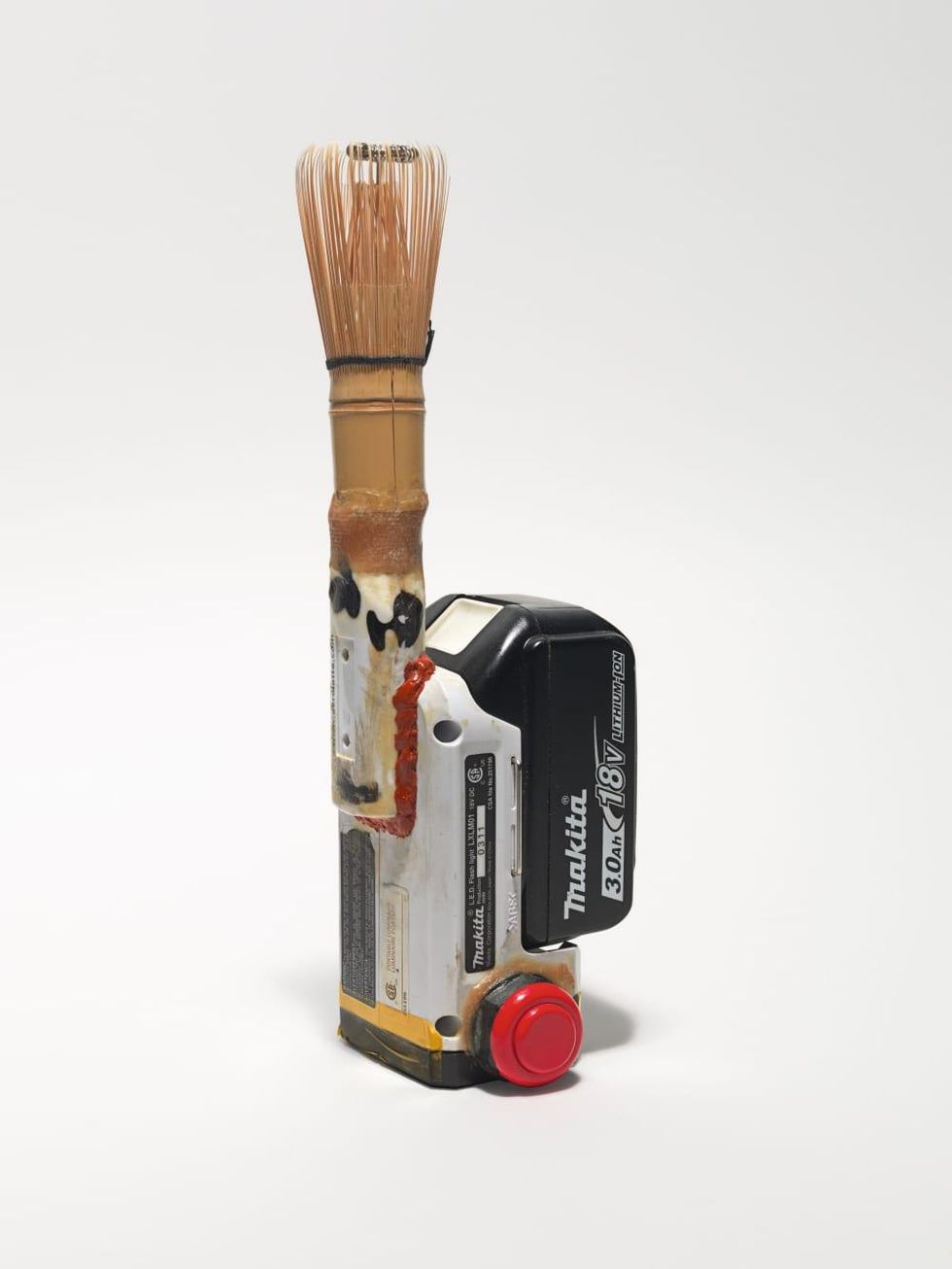Tea Time
New Nasher Sculpture Center tea exhibit steeps tradition in whimsy
It's difficult to keep up with Tom Sachs. While chatting on the phone or in person, his words run a million miles a minute, dropping fine art references and pop culture ruminations at a rapid-fire pace.
For an artist so energetic and enthusiastic, taking on the subject of the slow-moving meditative Japanese tea ceremony — or chanoyu — may seem like an incongruous choice. But Sachs' passion makes "Tom Sachs: Tea Ceremony" at the Nasher Sculpture Center an off-kilter but ultimately respectful undertaking.
Famous for his bricolage technique of melding industrial supplies with found objects and common hardware, Sachs first embraced the idea of the chanoyu in his 2012 “Space Program 2.0: MARS” exhibition at the Park Avenue Armory in New York.
“The astronauts had a very brief tea ceremony,” recalls the artist about his re-conception of the NASA Mars missions. “NASA are very careful to make sure there’s no earth bacteria (in their missions), but we’re the opposite. When we landed on Mars, we brought the culture of earth, and the astronauts brought the tea ceremony to represent the best of earth.”
The concept was intriguing enough to expand on at the Noguchi Museum in Queens, New York four years later.
Incorporating the corrugated wood tearoom from the Mars show as well as a fabricated plywood koi pond, a McDonald’s inspired stupa, and a bonsai tree blossoming with castings from cotton swabs, the artist’s installation is an interactive one for viewers. Sachs' friend and “colleague in tea” Johnny Fogg will visit the Nasher to conduct tea ceremonies on site on October 21, November 18-19, and December 9-10.
Two or three guests chosen by lottery and an audience of 30 will get to bask in the simplicity and silence of the ceremony with a Sachs-ian twist.
At the show’s mid-September opening, the artist invited two participants to don lab coats and lock away their electronics before entering the open teahouse. Cleansing his cups with a vinyl record cleaner pad before serving “sun at midnight” (an Oreo cookie on a handcrafted tray), the artist then offered “a bit of sweet” in the guise of a Pez candy dispensed from a green plastic Yoda. With such wacky materials in the mix, one might imagine it would be difficult for participants to keep a straight face between sips.
Surprisingly, it's Sachs' reverent yet humorous approach that makes this interpretation so successful. Having created over 600 pinch-formed tea bowls stamped with the NASA logo (a good selection of which are displayed in his “Large Chawan Cabinet”), Sachs proves he’s put in the work for “Tea Ceremony” to be taken seriously from its source culture.
“The Japanese have been the most appreciative of my bastardization of their history in the same way all my friends who are African-American seem to appreciate my work,” he says. “The people who seem to be offended are white, middle-aged, Jewish intellectuals like myself. The people who are offended by the tea ceremony are never the tea masters — they appreciate my commitment. I go as deep and hard as I can. To quote Muhammed Ali, ‘It’s not bragging if you back it up.’"
Sachs' tradition of employing humble materials has been in place from the beginning of his career. Working in the tradition of artists like Alexander Calder and Picasso, he chose materials because of their ability to “tell a history of who you are and where you come from.”
“When I started making things, I used foam core and plywood because I found them on the street and they were free. It came naturally," he says. "Now that I have more opportunity, I stick with those old materials because they have history with them. They have roots and meaning. There’s a tradition and ritual in using them.”
Tradition and ritual are obvious in his work, and Sachs was able to further explore the sources of his inspiration with the Nasher’s attendant exhibition in its “Foundations” series. On view in a gallery next to the “Tea Ceremony,” sculptures chosen from the museum’s permanent collection allow him to “take down” and join the modernist canon at the same time.
“I view that installation as a kind of project nepotism,” says Sachs. “How these works support my work. I’m looking at works that relate to what I do. There’s an arc that goes from (Julio) Gonzalez to David Smith to Picasso. ...It’s the simplicity of really dumb objects, and by dumb I mean blind, deaf and dumb or mute.
“The most mute object I can think of is the tea bowl by Chōjirō, who was a 16th century roofer who make Raku wear. He made the most reduced forms in 1503, and that form is the form I’m always striving to make.”
“Tom Sachs: Tea Ceremony” will be on view at the Nasher Sculpture Center through January 7, 2018.




